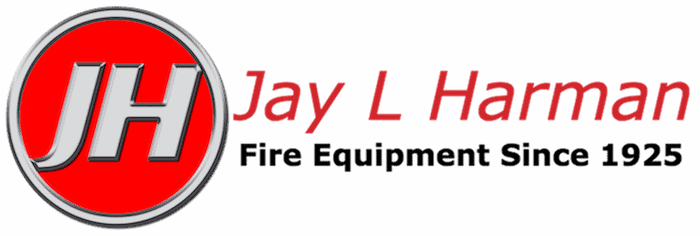When it comes to fire, commercial kitchens operate in a very high-risk environment. According to the most recent data from the National Fire Protection Association (NFPA), fire in eating and drinking establishments resulted in 110 civilian injuries and $165 million in direct property damage. Many of the affected businesses never recovered and had to close their doors for good.
Equipped with any number and combination of ranges, broilers, fryers and ovens operating at very high temperatures in close contact with fats, cooking oils, and other combustibles, commercial kitchens provide an ideal environment for fire. Not surprisingly, cooking equipment was responsible for more than 60 percent of the fires studied by the NFPA, underscoring the importance of following all fire extinguishing equipment requirements for the hoods, ducts, and cooking appliances used in commercial kitchens.
The NFPA 96 Standard for Ventilation Control and Fire Protection of Commercial Cooking Operations provides the requirements to help minimize fire risk and keep your employees and customers safe if a fire breaks out. The standards cover both automatic fire-extinguishing systems that provide primary protection as well as the portable fire extinguishers that provide secondary backup protection. Wet chemical systems are the most common type of automatic fire suppression system used in commercial kitchens today and are recognized by the fire protection industry as the most effective fire suppression system for commercial kitchens available.
This 4 part series will address 4 major areas associated with commercial kitchen fire safety regulations:
- Class “K” Portable Fire Extinguishers are Required
- Wet Chemical Fire Suppression Systems in Commercial Kitchens
- Installation and Operational Requirements
- Things to Know if You Modify Your Kitchen Set-up
Part 1 addresses the requirement for Class “K” portable fire extinguishers. Part 2 will address Wet Chemical Fire Suppression Systems. Part 3 will address Installation and Operational Requirements for Wet Chemical Fire Suppression Systems. Part 4 will address requirements that must be satisfied if you modify your commercial kitchen set-up.
Class “K” Portable Fire Extinguishers are Required
One of the more recent changes in the NFPA 96 standard is the requirement for placards to be placed above all class “K” fire extinguishers stating that the automatic fire extinguishing system for the cooking appliance is to be activated prior to using the portable fire extinguisher. This change was made because today’s commercial kitchens use high-efficiency cooking appliances capable of extremely high energy input/output rates and vegetable oils that can ignite at high temperatures. When these oils ignite, they are already so hot that a portable extinguisher may not be effective.
Activating the kitchen’s pre-engineered fire suppression system before reaching for the fire extinguisher is a better option for extinguishing the fire because it will eliminate the heat source by shutting off the electricity or gas flowing into the appliance and quickly cover the hot cooking oil with the fire suppression agent.
Wet chemical fire suppression systems are extremely reliable. Given this, you might ask why you even need portable fire extinguishers. The answer is simple – any system can fail, and it’s possible for grease spills that occur to spread a fire to an unprotected area. This is why the requirement for portable fire extinguishers in commercial kitchens remains in both the NFPA 96 and the NFPA 10 Standard for Portable Fire Extinguishers.
In order to handle the special cooking appliance fire hazards found in commercial kitchens today, you must use class “K” rated fire extinguishers. This is due to the large amounts of cooking oils and fats found in commercial kitchens. While these are technically flammable liquids, Class “B” extinguishers are not suitable to address the special kinds of hazards found in commercial kitchens. Class “K” fire extinguishers use chemical agents that react with hot oils or grease to turn it into a non-flammable soap-like substance.
The NFPA code does not prescribe the size of the class “K” extinguisher to be used. A good rule of thumb is, the greater the hazard, the larger extinguisher you will need to handle it. However, it is always best to consult the Authorities Having Jurisdiction (AJH) prior to selecting new fire extinguishers for your kitchen to ensure you are in compliance with local codes.
The Jay L Harman Fire Equipment team understands your firefighting needs and is ready to help
Jay L Harman’s DOT Hydrostatic Testing facility and equipment meet all NFPA requirements for the hydrostatic testing of self contained breathing apparatus compressed gas cylinders in addition to testing ABC portable fire extinguisher cylinders.
Jay L Harman is the best and one of the biggest firefighting equipment suppliers and service providers in the region, specializing in fire suppression systems, fire extinguishers, emergency lighting, fire hoses, hydrostatic testing and more. Serving El Paso TX, Las Cruces NM and the surrounding areas, we pride ourselves on buying local and hiring local whenever possible.
Jay L Harman Fire Equipment is your go-to distributor for OVAL low-profile fire extinguishers in West Texas and New Mexico.
Contact Jay L. Harman Fire Equipment in El Paso TX at 915-533-7021 or Las Cruces NM at 575-523-8880..
Since 1925e ideal fire suppression system for your needs. Learn more about our full offering of fire extinguisher training, firefighting services, firefighting products, request a quote, ask a question or request additional information.
